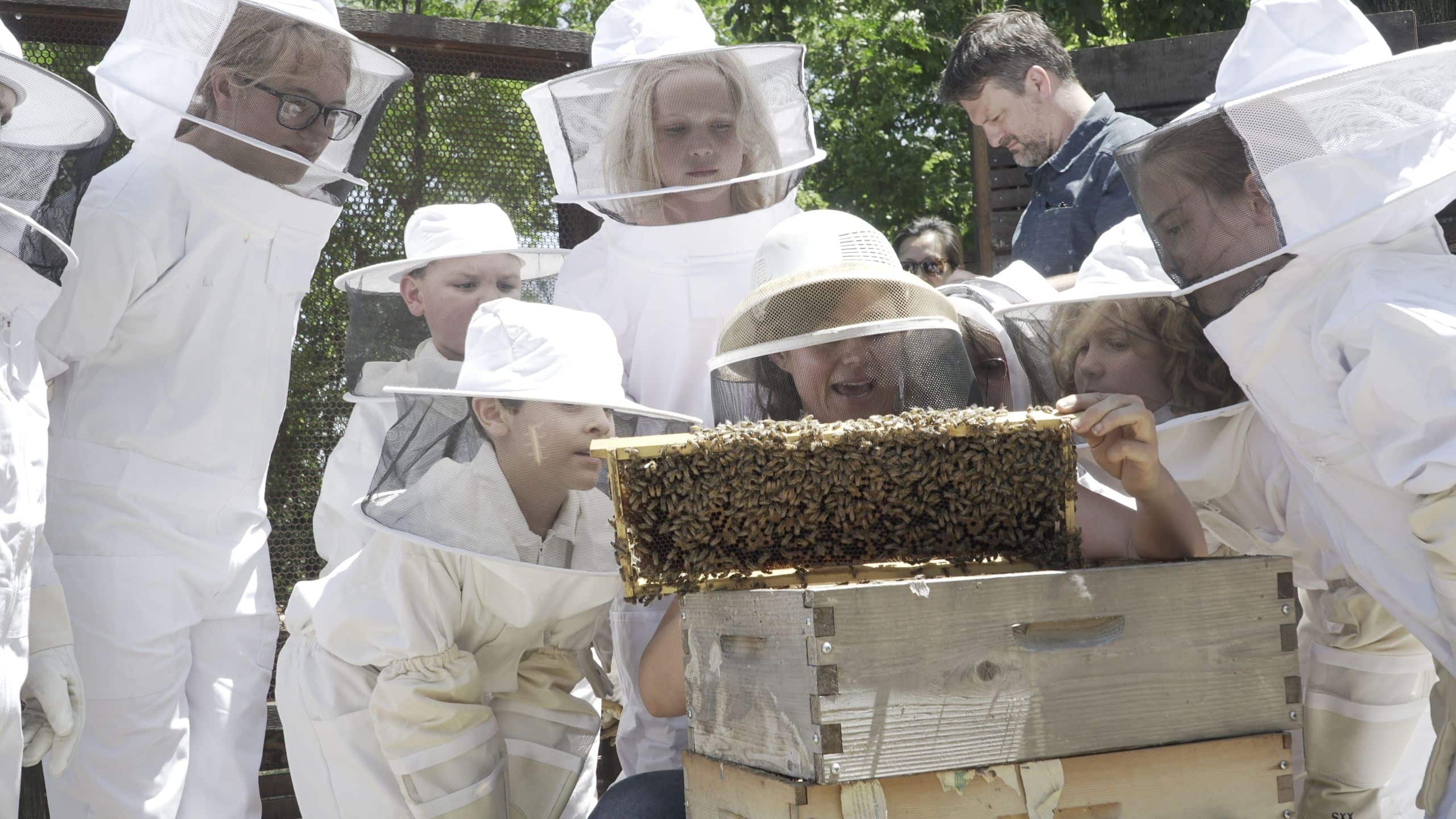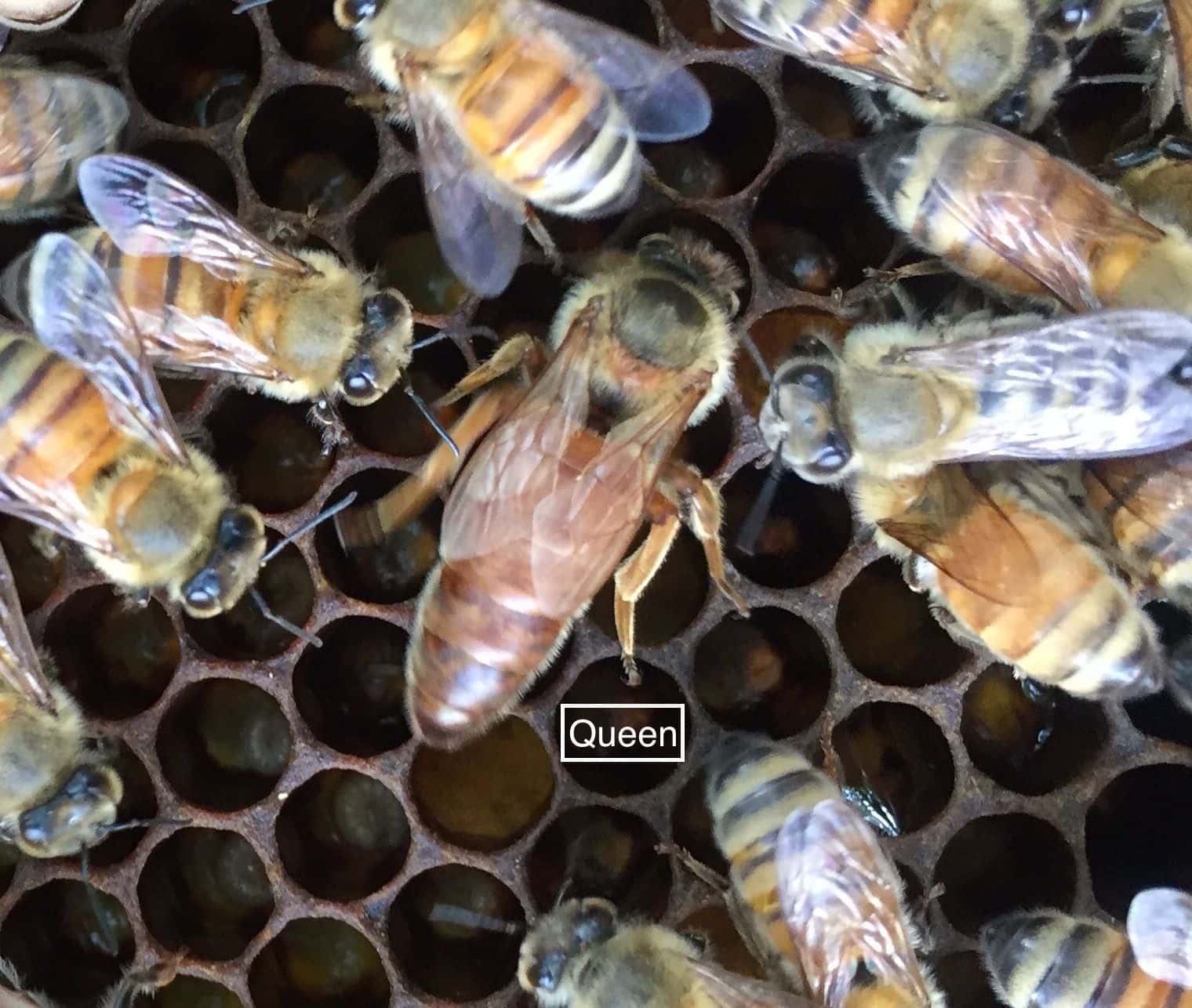Vitamix Rules
Rules & Regulations for the Healthy Teacher Giveaway here.
Whole Kids Foundation's Executive Director and resident beekeeper, on the life lessons we can learn from our favorite buzzing pollinators!
I’ve always been a hands-on leader. It was easy to understand the importance of school gardens for students, because I was growing food in my backyard - and saw first hand how kids who refused vegetables at the dinner table would eagerly bite into a freshly pulled carrot (soil and all)!
Mother Nature is the truly an incredible teacher - for all ages! My teenage son and I are learning that lesson once more—from honey bees.
Our family has pondered beekeeping for a few years. We have a farm that hosts native pollinators. Recently we decided to add honey bee hives. In addition to learning about the bee life cycle and how a colony functions, there are lots of great life lessons that bees teach us.

When you’re holding a frame of bees you have a whole world in your hands. Moving in slow motion allows we humans to observe nature without disturbing it. I’m from a generation that was taught to fear bees - so remembering to breathe is essential. My awareness of this simple rule is heightened and I find myself applying it every day!
Curious friend question: the first time I posted a picture of me next to a frame of bees, many friends asked, “Why aren’t they stinging you?” Honey bees are not aggressive. They exist solely to gather pollen, take care of the hive, and make more bees. They only sting when threatened. And after they sting, they die.

Each hive of bees has a queen. That queen has a scent that tells her bees where their colony is. Locating a queen on a frame of bees is like an intense game of Wheres Waldo. Each time we find our queens—we take a picture so we can compare and watch her grow. What’s really interesting is what happens when you ZOOM IN on those photos…you can see what’s happening under all hose bees.
In each cell of the honeycomb, there is pollen, an egg, larvae or capped brood- that’s when the larva begins to pupate (turn into a bee) and the worker bees cap it. When the new bee is ready, it chews out of the cell. Zooming in is a good life lesson—seeking to understand what’s happening beneath all the busy can be really enlightening!

At Whole Kids, we’re always talking about the importance of eating a rainbow of natural colors (red tomatoes, leafy greens, blueberries - you get the idea) because the micronutrients that give each food their color each have a different role in keeping us healthy. Well, bees eat a rainbow too — they pollinate the plants that make a rainbow of food. So it should be no surprise that their POLLEN is colorful - every hue of yellow, gold, orange, ochre.
As we kick off National Pollinator Month - I invite you to discover the fascinating world of honey bees. After all, they are responsible for one-third of the food we eat. If you have younger kids—check out our bee activities. For kids 5 and up - find a beehive in your community. Many nature science centers will have observation hives, you can use our map to find a school that is hosting a beehive or look up local beekeepers in your area!
And if you're naturally curious and hands-on like me — and you read enough blogs and visit enough Pinterest posts — you might just find yourself keeping bees!